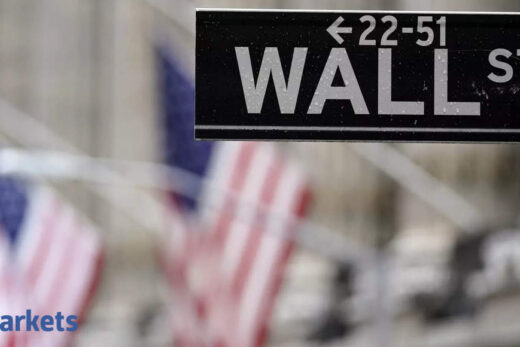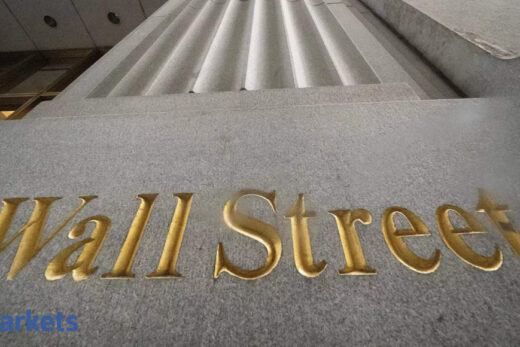It’s one of those tens of millions of tiny businesses you see everywhere in India. Most are so nondescript it’s hard to imagine that together they supply the wheels on which the $2.7 trillion economy runs. Their value only became clear when the wheels came off.
This week last year, Prime Minister Narendra Modi announced a sudden, complete lockdown. And that’s when the Mahi tailoring centre in Indore, a historic city of 3 million, become important to one of the world’s richest men — 7,000 miles away in Seattle. With no customers coming to get blouses stitched, Hodkar came to a conclusion: Her shop couldn’t battle the pandemic on her own. To pay the rent and school fees, she had to hitch a ride with Jeff Bezos’s Amazon.com Inc.
The world’s largest retailer is permeating the complex tapestry of the only billion-people-plus market open to it. And it’s doing so by tweaking its business models to suit local preferences, practices, quirks — and Covid-19 disruptions. The “I Have Space” partnership Hodkar has signed up for allows entrepreneurs to collect Amazon packages for their area, safekeep them, and go door to door when they know there’ll be someone home to receive the orders. Drop-offs at the doorstep or in the mailbox may be common in the US, but they aren’t a workable option in India. Rather than waste money on failed deliveries, it helps Amazon to have a local as its ally. Hodkar tells me she’s making as much as she did before the pandemic for a few hours the 30-year-old spends on the road on her Honda Activa two-wheeler.
 Bloomberg
BloombergThe US e-commerce firm is approaching zero hour in India. The Supreme Court in New Delhi will soon decide on its bid to scuttle the $3.4 billion sale of debt-laden retailer Future Group’s assets to archrival Mukesh Ambani’s Reliance Industries Ltd. India’s richest man already owns 12,000 stores. Winning control of Future’s outlets might leave him with an unshakeable dominance. Footfall for Reliance Retail was still at 75% of pre-Covid levels last quarter. But by using 1 million small merchants as partners — and turning some of his own stores into fulfillment centres — Ambani, too, is mixing up online and offline to go hyper-local. With one big advantage over Bezos: his 410 million telecom customers.
In a recent survey, consulting firm Technopak predicts that the retail market would grow by $700 billion by 2030, with most of the expansion and half of new jobs coming from a fusing of digital and physical commerce. India’s 0.2% share in global online orders would rise to 8.9%. Apart from Bezos and Ambani, Walmart Inc.-owned Flipkart, and the Mumbai-based conglomerate Tata Group, which recently acquired an online grocer backed by Alibaba Group Holding Ltd., will be the main contenders for the prize.
India’s promise lies in growth, for which Amazon is prepared to go as local as it must. The peril lies in excessive control. Rules for foreign investment in online retail may get yet more restrictive. New directives are reported to be in the works to discourage sellers on Amazon and Walmart-Flipkart from buying goods from the wholesale units of the US firms. Separately, in what seems to have become an annual ritual, the third draft of a national e-commerce policy is doing the rounds. The document asks platforms to “ensure equal treatment of all sellers” and not adopt “algorithms which result in prioritising select vendors.”
The importance of an open, well-contested marketplace can’t be disputed. But it would be unfair to force e-commerce operators to give all sellers the same treatment, regardless of “size, scale, quality and what they bring to the table,” as Krishnan Ganesh, an early backer of Big Basket, the online grocery recently bought by the Tata Group, told BloombergQuint.
Besides, a foreigner versus local lens may not be appropriate to judge monopolistic behaviour. India’s antitrust regulator wants to investigate both Amazon and Flipkart-Walmart. But pure e-commerce is a sliver of the $1 trillion retail market. In the emerging online-plus-offline landscape of Retail 4.0, local competitors won’t exactly be minnows. Plus, they’ll be free of the policy fetters that keep global players in check.
The ideal policy would encourage smaller physical retailers to digitise, giving them a chance to adapt. Not every corner shop needs its own website. But they can all benefit from accessing credit and tapping more brands directly, something that 1.7 million retailers in 900 Indian cities are already doing on an indigenous app called Udaan, built by a five-year-old company that’s among the country’s fastest-growing unicorns, as startups valued over $1 billion are commonly known.
The rivalry between Bezos and Ambani won’t end with a verdict in the Future Group case, where the founder took money from Amazon but decided to sell out to Reliance. (
Ltd. shares fell by their 10% limit on Friday after the Delhi High Court said that a Singapore arbitration tribunal’s interim order to stay the deal was enforceable in India.) The next frontier will be payments, where the two have forged competing groups to bid for the right to operate nationwide digital networks. These will run parallel to the current not-for-profit interface that handled $59 billion in transactions in January, double from a year earlier. Once again, explosive growth will make for a keen contest. Visa Inc. is partnering Amazon. Reliance has teamed up with Facebook Inc. and Google’s parent Alphabet Inc., which are also backing its Jio telecom venture. The Tata Group has gone in with Mastercard Inc.
That license (it could be one or two) would tell a great deal about which of the hopefuls for India’s retail crown would be able to penetrate deeper — not just into consumer wallets, but the lives and livelihoods of the smallest of grocers, tailors, and provision stores in the remotest corner of India. That’s where the winning edge lies.



